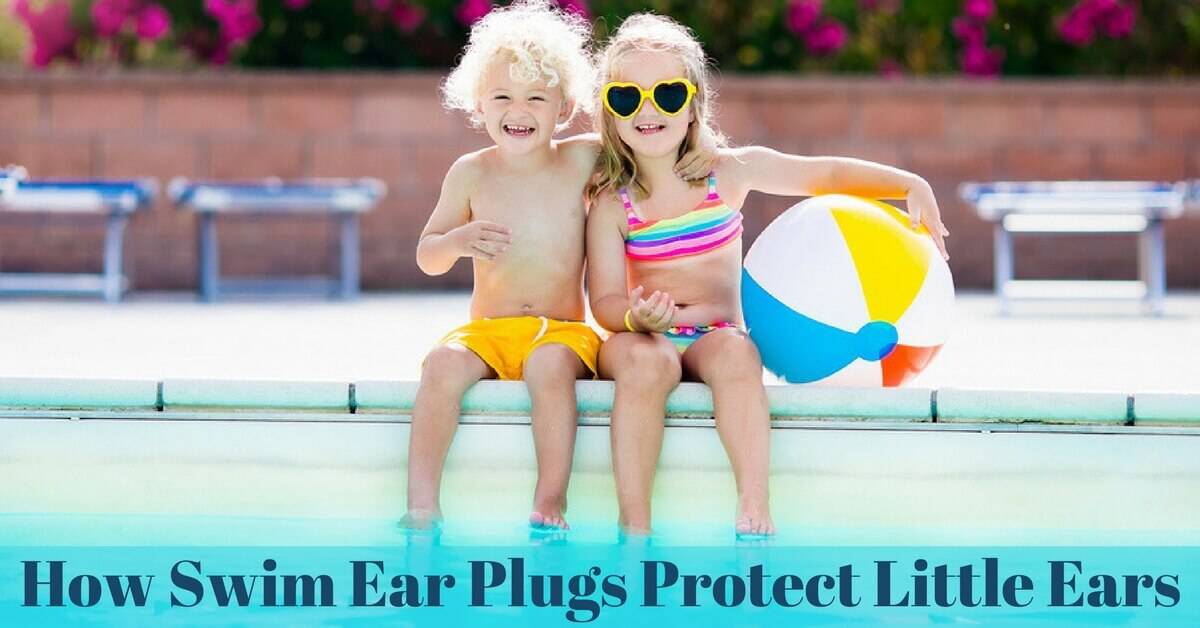It’s been a few weeks since the school bells last rang for the year, and summer is in full swing. For many of our littlest Arizonians, this means hours and hours to be spent in and around the pool. While most parents and caregivers are aware of basic risks around water – such as the importance of sunscreen, early swim lessons and reminding kids to walk on the cool deck, swim earplugs are often overlooked. At Desert Valley Audiology, we care about the health of your child’s ears this summer. Learn about the dangers of swimming on little ears, why earplugs are beneficial and the various types available for your children.
How is Swimming Dangerous to Ears?
Swimmer’s ear is a painful infection that affects millions of people each year. Swimmer’s ear is one of the four most common types of ear infections, and is caused by excess water in the ear canal. When water doesn’t drain properly from the ear canal, the natural bacteria in the water will buildup and multiply, causing an excruciatingly painful infection of the skin in the outer ear canal. The infection causes swelling and inflammation, which can even lead to temporary hearing distortion or loss. Swimmer’s ear is more common for those who swim in natural waters such as rivers or lakes, but can also be contracted from chlorine-treated water in backyard or community pools.
Although one does not need to be a swimmer to contract swimmer’s ear, people who spend time in and around water are five times more likely to contract swimmer’s ear. Instinctively so, the infection is also much more common in the summer, with 44% of cases occurring between the months of June and August (http://www.healthyhearing.com/report/52473-Swimmer-s-ear-can-lead-to-temporary-hearing-loss). Swimmer’s ear is also more common in children than adults, mainly due to the smaller and more constricted ear canal.
Why are Earplugs Beneficial?
Earplugs are commonly recommended by hearing professionals and pediatricians for the prevention of swimmer’s ear and other infections. While tilting the head to the side to drain water, drying ears with a towel, or using a blow-dryer on a low setting may all help to remove excess moisture from the ears – preventing water from entering the ears in the first place through the use of swim earplugs is the most effective way to prevent infections.
Swim earplugs are also recommended for children with ear tubes. Ear tubes are placed within the eardrum to help ears prone to multiple inner ear infections better drain excess fluids. Some doctors even recommend swim earplugs while bathing for children with ear tubes. Soap can act as a lubricant that will reduce surface tension and allow bathtub water to more easily enter ear tubes. (http://www.healthyhearing.com/report/52474-Kids-and-swim-ear-plugs-what-you-need-to-know).
Types of Swim Earplugs
There are two basic types of swim earplugs readily available on the market – custom and one-size-fits-all. It is important to understand the positives and negatives of each type to determine which is the better option for your family.
Custom Swim earplugs – Custom earplugs are uniquely made to perfectly fit your child’s ear. They are extremely comfortable and because of their perfect fit, do not pose a risk of allowing fluid to leak into the ear canal. These plugs are the highest quality, last much longer than store bought plugs and are washable and re-usable to ensure greatest hygiene. Drawbacks of custom plugs are that they are more expensive, and more difficult to replace if lost. Custom earplugs may be a good option for older children, or those heavily involved in team watersports such as diving or synchronized swimming.
One-Size-Fits-All earplugs – One-size-fits-all earplugs can be easily and inexpensively purchased at most grocery stores or pharmacies. They are typically made from silicone or putty and are much cheaper than their custom counterparts. They are also very easy to insert, thus children can typically use them themselves without the need for adult help. These plugs also come in bright colors, making them easy to spot when lost at the bottom of the pool. The drawbacks of these plugs is that they are typically not washable, making them less hygienic. Because of wax buildup, they can usually be used only a few times before needing to be disposed. This type may be a good option for younger children more prone to losing their plugs.
At Desert Valley Audiology, we provide hearing health care to all members of your family! Contact us today for more information.

